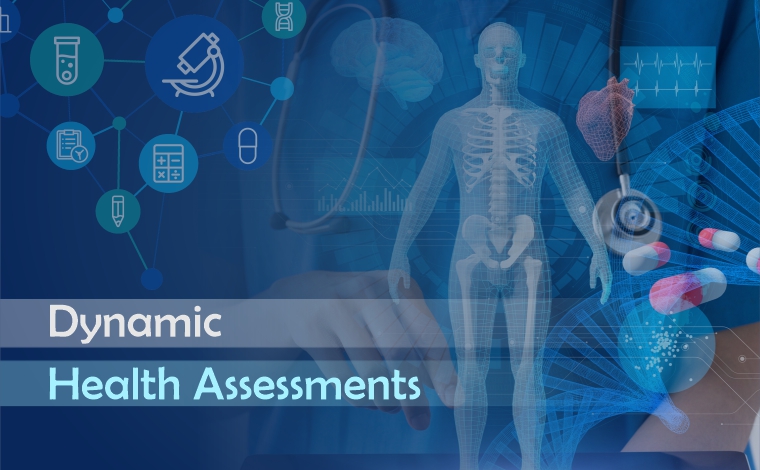
The process of delivering high-quality patient care requires multiple steps, beginning with an assessment. This can be not a diagnostic tool but rather a way of collecting data while engaging and educating patients on their health journey. The initial information collected across domains like physiological, social, or behavioral determinants and lifestyle factors contributes to the later diagnosis and plan for that patient. There are numerous benefits to administering screenings and assessments for both patients and healthcare providers. For patients, these present opportunities to interact with a healthcare provider (HCP) and determine their current health status, specific habits or behaviors to switch, and symptoms to observe.
Acquiring the knowledge and means of identifying impactful health behaviors helps activate patients during their care journey. Additionally, routine screenings and assessments result in the first detection of conditions which improves patient outcomes and reduces costs for either side. On the clinical side, the provision of standardized screenings and assessment tools positions HCPs to track and trend across a person or population more easily. Standardized tools also allow providers to quickly and consistently identify possible health needs with data-driven recommendations for further intervention. Finally, these screenings also help identify issues that will require patient referrals to additional resources. An alternative tactic to execute this process is by enabling a patient self-assessment. During this particular scenario, it’s rather more cost-effective and time-efficient for healthcare providers to gather data.
This approach also gives the patient autonomy in how and once they complete these assessments, but several challenges include any health assessment administration. While these screenings and assessments support a fundamental component of the care process, their administration has several challenges. One challenge is that the training required for correct administration and analysis of screening tools. If not collected accurately or fully, the data might not have an efficient use. Another issue healthcare providers face increased screening rates, which are especially high thanks to the backlog of primary and preventive care. What recently started as a two-week delay in screenings has now grown to months, and also, the long-term effects and impact on mortality are troubling.
These challenges and concerns are further heightened with the COVID-19 pandemic. The cancellation or postponement of various appointments has minimized the possibilities of early detection also because of the benefits that include it. Social isolation and the economic recession have taken a heavy toll on mental health, not to mention increased uninsured patients creating a high need for screenings. The necessity of telehealth and virtual assessments has opened the window for a sophisticated and interactive technology solution to efficiently administer assessments and support for patients while expanding the reach and overall patient engagement.
Simbo.ai provides the answer as a digital exterior door that seamlessly guides and navigates patients throughout their care journey. Several features distinguish Simbo.ai as a number one solution for virtual patient support. Simbo.ai’s advanced tongue processing capabilities enable patients to speak in natural conversation with the chatbot. Additionally, Omni channel access supports large-scale and diverse population-based outreach across different communication tools and digital literacy rates. This solution directly targets prominent challenges in assessment administration and new hurdles that have recently presented themselves amid the COVID-19 pandemic.
These assessments are now automated and deployed directly within the chatbot conversation. This mitigates the burden of coaching nurses and other healthcare providers on utilizing and implementing screening tools. The care team can now be more efficient and spend time connecting with patients instead of administering additional assessments during the visit. Using a virtual assistant to administer these assessments equips an HCP to still connect with their patients from no-shows or canceled appointments. The Omni channel cascade of reminders – SMS, email, and phone – ensures patients stay engaged throughout the care journey: it activates patients to schedule appointments, attend routine screenings, and complete other health assessments.
The Simbo.ai solution presents supplemental resources and suggestions within the chatbot to improve response rates and re-engage patients, like commonly asked questions, easy accessibility to scheduling, and symptom checking support. For example, since the start of the COVID-19 pandemic, Simbo.ai has supported an outsized healthcare organization with the administration of a COVID-19 patient screener. To confirm the protection of healthcare providers and other patients, this screener reduces the chance of infected patients coming to certain appointments or treatments. With the Simbo.ai solution, this assessment is deployed through multiple channels – SMS, email, and then phone. The results of this outreach showed around a 70% engagement rate, which contributed to the convenience of linguistic communication and Omni channel access. Thus, Simbo.ai can support customized campaigns that remove healthcare providers’ burden of large-scale assessment administration while engaging patients in an exceedingly dynamic way.
